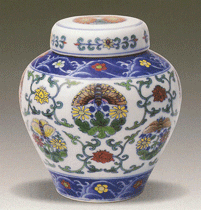CONNOISSEURSHIP & VALUATION
-Most-Up-to-Date Guide Book (Forthcoming)
Wei Yang’s Guide to Chinese Ceramics (forthcoming) focuses on some basic issues concerning the appraisal of Chinese ceramics. The guidebook is divided into four sections: identification and valuation, Chinese porcelains, mark and decoration, and References. Section 1 consists of three topics: the Basics (definition, shaping, firing, glazing and treatment); Analysis and Valuation (dating, authentication, qualitative ranking, and case study). Section 2 introduces the fundamentals to the appreciation of primitive ceramics, antique wares of 10th -13th centuries and colored wares of 14th -20th centuries. Section 3 discusses marks and decorative motifs. Section 4 explain the impact of the original, the imitation or the copy on the market value. It concludes with a summary of famous reginal kilns, glossary and bibliography.
This guidebook offers practical guidance on the identification and valuation of Chinese ceramics. It helps English readers gain access to a correct reading of marks via images. It demonstrates how to use the proposed methodology via a few case studies.
ART HISTORY & TECHNOLOGY
-Identification & Authenticity
Barnes, Laurie E, et al. Chinese Ceramics from the Paleolithic Period through the Qing Dynasty (New Haven: Yale University Press, 2010).
Bower, Virginia, et al. Decorative Arts, Part II: Far Eastern Ceramics and Paintings: Person and Indian Rugs and Carpets (Washington: National Gallery of Art, Oxford University Press, 1998).
Carswell, John. Blue & White: Chinese Porcelain around the World (London: British Museum Press, 2000).
Leidy, Denise Patry. How to Read Chinese Ceramics (New Haven & London: Yale University Press, 2015).
Little, Stephen. Chinese Ceramics of the Transitional Period, 1620-1683 (New York: China House Gallery, 1983).
Pierson, Stacey. Earth, Fire and Water: Chinese Ceramic Technology: A Handbook for Non-Specialists (London: University of London, 1996).
Wood, Nigel. Chinese Glazes: Their Origins, Chemistry, and Recreation (London & Philadelphia: A & C Black, University of Pennsylvania Press, 2011).
Sargent, William R.Treasures of Chinese Export Ceramics from the Peabody Essex Museum (New Haven & London: Yale University Press, 2012).
Scott, Rosemary E., et al. Imperial Taste: Chinese Ceramics from the Percival David Foundation (London: Percival David Foundation of Chinese Art, 1989).
DECORATION & MARK
-Dating & Origin
Cort, Louise Allison and Jan Stuart. Joined Colors: Decoration and Meaning in Chinese Porcelain. Ceramics from Collectors in the Min Chiu Society (Hong Kong: Tai Yip Co., 1993).
Curtis, Julia B. Chinese Porcelains of the Seventeenth Century: Landscapes, Scholars’ Motifs and Narratives (New York: China Institute Gallery, 1995).
Hong Quan. Zhongguo guai taoci kuanshi (Marks of Antique Chinese Ceramics) (Changsha: Huan meishu, 2009).
Mino, Yutaka, and Katherine R. Tsiang. Ice and Green Clouds: Traditions of Chinese Celadon (Indianapolis: Indianapolis Museum of Art, Bloomington: Indiana University Press, 1986).
Mowry, Robert D. Hare’s Fur, Tortoiseshell, and Partridge Feathers: Chinese Brown-and Black-Glazed Ceramics, 400-1400 (Cambridge, Mass.: Harvard University Museum, 1996).
Pierson, Stacey. Designs as Signs: Decoration and Chinese Ceramics (London: Percival David Foundation of Chinese art, University of London, 2001).
Xiong Liao and Xiong Wei.Zhongguo lidai taoci kuanshi dadian (Collection of Chinese Marks of All Dynasties) (Shanghai: Wenhua, 2004).

